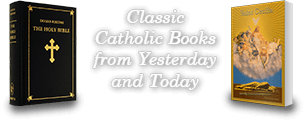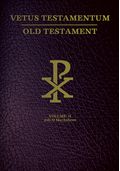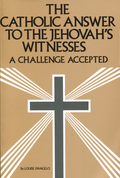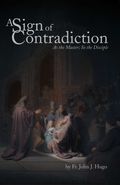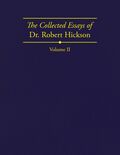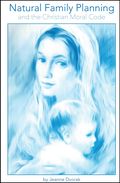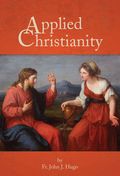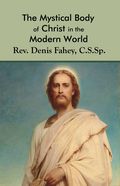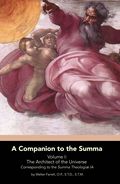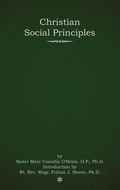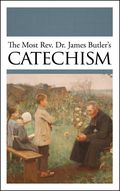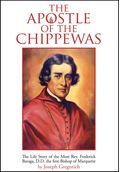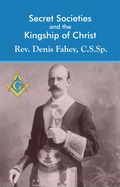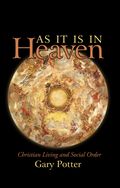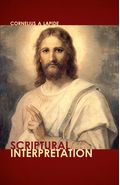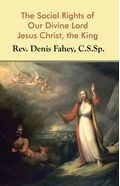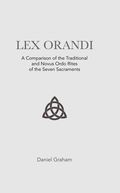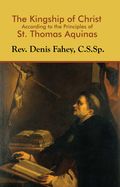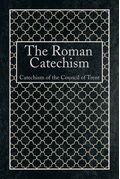Categories
Information
All Products
THE VULGATE IS THE OFFICIAL BIBLE OF THE CATHOLIC CHURCH
ALSO AVAILABLE AS A THREE VOLUME COMPLETE MATCHING SET
Vol. One includes the books from Genesis to Esther - 1080 pages
Vol. Two includes the books from Job to Machabees II -1040 pages
In keeping with the wishes of the Holy Father, Benedict XVI, Loreto Publications has published this truly unique edition of the Bible in Latin and English. Suitable either for students of theology and the Scriptures, for those studying Latin, or just for Catholics who wish to conduct themselves according to the mind of the Church, this edition brings together two classic versions of the Bible which have served Catholics well, down through the centuries.
- One Volume New Testament
- Two Volumes Old Testament
- Clear Typeface
- Burgundy bonded leather cover
- English column opposite Latin column
Download a free sample from this book.
Acts of the Apostles - Chapter 27:11-40
11 But the centurion believed the pilot and the master of the ship, more than those things which were said by Paul.
12 And whereas it was not a commodious haven to winter in, the greatest part gave counsel to sail thence, if by any means they might reach Phenice to winter there, which is a haven of Crete, looking towards the southwest and northwest.
They weather a great storm
13 And the south wind gently blowing, thinking that they had obtained their purpose, when they had loosed from Asson, they sailed close by Crete.
14 But not long after, there arose against it a tempestuous wind, called Euroaquilo.
15 And when the ship was caught, and could not bear up against the wind, giving up the ship to the winds, we were driven.
16 And running under a certain island, that is called Cauda, we had much work to come by the boat.
17 Which being taken up, they used helps, undergirding the ship, and fearing lest they should fall into the quicksands, they let down the sail yard, and so were driven.
18 And we being mightily tossed with the tempest, the next day they lightened the ship.
19 And the third day they cast out with their own hands the tackling of the ship.
20 And when neither sun nor stars appeared for many days, and no small storm lay on us, all hope of our being saved was now taken away.
Paul declares that all are to be saved
21 And after they had fasted a long time, Paul standing forth in the midst of them, said: You should indeed, O ye men, have hearkened unto me, and not have loosed from Crete, and have gained this harm and loss.
22 And now I exhort you to be of good cheer. For there shall be no loss of any man’s life among you, but only of the ship.
23 For an angel of God, whose I am, and whom I serve, stood by me this night,
24 Saying: Fear not, Paul, thou must be brought before Caesar; and behold, God hath given thee all them that sail with thee.
25 Wherefore, sirs, be of good cheer; for I believe God that it shall so be, as it hath been told me.
26 And we must come unto a certain island.
He exhorts them to take some food
27 But after the fourteenth night was come, as we were sailing in Adria, about midnight, the shipmen deemed that they discovered some country.
28 Who also sounding, found twenty fathoms; and going on a little further, they found fifteen fathoms.
29 Then fearing lest we should fall upon rough places, they cast four anchors out of the stern, and wished for the day.
30 But as the shipmen sought to fly out of the ship, having let down the boat into the sea, under color, as though they would have cast anchors out of the forepart of the ship,
31 Paul said to the centurion, and to the soldiers: Except these stay in the ship, you cannot be saved.
32 Then the soldiers cut off the ropes of the boat, and let her fall off.
33 And when it began to be light, Paul besought them all to take meat, saying: This day is the fourteenth day that you have waited, and continued fasting, taking nothing.
34 Wherefore I pray you to take some meat for your health’s sake; for there shall not an hair of the head of any of you perish.
35 And when he had said these things, taking bread, he gave thanks to God in the sight of them all; and when he had broken it, he began to eat.
36 Then were they all of better cheer, and they also took some meat.
37 And we were in all in the ship, two hundred threescore and sixteen souls.
38 And when they had eaten enough, they lightened the ship, casting the wheat into the sea.
The all escape unharmed
39 And when it was day, they knew not the land; but they discovered a certain creek that had a shore, into which they minded, if they could, to thrust in the ship.
40 And when they had taken up the anchors, they committed themselves to the sea, loosing withal the rudder bands;
Actus Apostolurum - Chapter 27:11-40
11 Centurio autem gubernatori et nauclero magis credebat, quam his quæ a Paulo dicebantur.
12 Et cum aptus portus non esset ad hiemandum, plurimi statuerunt consilium navigare inde, si quomodo possent, devenientes Phœnicen hiemare, portum Cretæ respicientem ad Africum et ad Corum. Patiuntur magnam tempestatem
13 Aspirante autem austro, æstimantes propositum se tenere, cum sustulissent de Asson, legebant Cretam.
14 Non post multum autem misit se contra ipsam ventus typhonicus, qui vocatur Euroaquilo.
15 Cumque arrepta esset navis, et non posset conari in ventum, data nave flatibus, ferebamur.
16 In insulam autem quamdam decurrentes, quæ vocatur Cauda, potuimus vix obtinere scapham.
17 Qua sublata, adjutoriis utebantur, accingentes navem, timentes ne in Syrtim inciderent, summisso vase sic ferebantur.
18 Valida autem nobis tempestate jactatis, sequenti die jactum fecerunt:
19 et tertia die suis manibus armamenta navis projecerunt.
20 Neque autem sole, neque sideribus apparentibus per plures dies, et tempestate non exigua imminente, jam ablata erat spes omnis salutis nostræ. Affirmat Paulus omnes salvandos esse
21 Et cum multa jejunatio fuisset, tunc stans Paulus in medio eorum, dixit: Oportebat quidem, o viri, audito me, non tollere a Creta, lucrique facere injuriam hanc et jacturam.
22 Et nunc suadeo vobis bono animo esse: amissio enim nullius animæ erit ex vobis, præterquam navis.
23 Astitit enim mihi hac nocte angelus Dei, cujus sum ego, et cui deservio,
24 dicens: Ne timeas, Paule: Cæsari te oportet assistere: et ecce donavit tibi Deus omnes qui navigant tecum.
25 Propter quod bono animo estote, viri: credo enim Deo quia sic erit, quemadmodum dictum est mihi.
26 In insulam autem quamdam oportet nos devenire.
Hortatur eos ad cibum sumendum
27 Sed posteaquam quartadecima nox supervenit, navigantibus nobis in Adria circa mediam noctem, suspicabantur nautæ apparere sibi aliquam regionem.
28 Qui et summittentes bolidem, invenerunt passus viginti: et pusillum inde separati, invenerunt passus quindecim.
29 Timentes autem ne in aspera loca incideremus, de puppi mittentes anchoras quatuor, optabant diem fieri.
30 Nautis vero quærentibus fugere de navi, cum misissent scapham in mare, sub obtentu quasi inciperent a prora anchoras extendere,
31 dixit Paulus centurioni et militibus: Nisi hi in navi manserint, vos salvi fieri non potestis.
32 Tunc absciderunt milites funes scaphæ, et passi sunt eam excidere.
33 Et cum lux inciperet fieri, rogabat Paulus omnes sumere cibum, dicens: Quartadecima die hodie exspectantes jejuni permanetis, nihil accipientes.
34 Propter quod rogo vos accipere cibum pro salute vestra: quia nullius vestrum capillus de capite peribit.
35 Et cum hæc dixisset, sumens panem, gratias egit Deo in conspectu omnium: et cum fregisset, cœpit manducare.
36 Animæquiores autem facti omnes, et ipsi sumpserunt cibum.
37 Eramus vero universæ animæ in navi ducentæ septuaginta sex.
38 Et satiati cibo alleviabant navem, jactantes triticum in mare.
Omnes evadunt incolumes
39 Cum autem dies factus esset, terram non agnoscebant: sinum vero quemdam considerabant habentem littus, in quem cogitabant si possent ejicere navem.
40 Et cum anchoras sustulissent, committebant se mari, simul laxantes juncturas gubernaculorum: et levato
192 pages, softcover
By Louise D'Angelo
This book presents to the reader the information which they need to protect their own faith or the faith of someone they love from the attacks of the Witnesses. This book was written after 16 years of toil and research by the author. There is nothing like it in print today. It contains full explanations of what the Witnesses believe and how they use the Bible to try to trap unsuspecting Catholics.
Fr. John Hugo - 422 Pages - EBOOK - PDF, Kindle, & EPUB
Fr. Onesimus Lacouture was a Jesuit who had the great gift of being a masterful director of souls. Being a Jesuit formed in the old mold of true Ignatian spirituality and deeply affected by the so-called “French School” of Cardinal Berulle, St. John Eudes, and St. Louis Marie de Montfort, his retreats, given to over 6000 American and Canadian priests, produced extraordinary results. His most well known disciple and good friend, Fr. Hugo, has produced for posterity, the Notes from those Ignatian retreats as given by Fr. Lacouture and subsequently by himself and many other priests.
A Sign of Contradiction is Fr. Hugo’s apologia for the work of Fr. Lacouture and the “spiritual movement” that grew spontaneously from the ardent, enlightened, and effective preaching of the retreats. He describes the movement, its opponents and its supporters as well as the revelatory doctrines so convincingly presented by Fr. Lacouture.
This book is spiritually motivating, historically informative, and powerfully illuminating in regard to the condition of the Church and the faithful in North America during the mid-twentieth century. The Gospel of Peace, and Applied Christianity (the retreat notes of Fr. Lacouture) by Fr. Hugo are also available from Loreto Publications.
Hardcover - 8.5" x 11" 680 pages
Loreto Publications is pleased to present almost 100 essays from one of the most fascinating Catholic American essayists of our post Vatican era. Robert Hickson's broad experience and deep personal knowledge of politics, military affairs, literature, and religion in late 20th century America give him a unique perspective and judgement that is thoroughly Catholic and poingnantly expressive. His curriculuum vitae is impressive and his experience as a soldier, college professor, public speaker, husband, father, and traditional Catholic warror are evident in these profound and penetrating writings.
FOREWORD
It is part of the vocation of a small Catholic publisher like Loreto Publications to give voice not only to the accumulated wisdom of past ages, but also to make known the effects of grace in the souls of the men and women whose lives run concurrent with our own, when those effects are worth noting and preserving for future generations. If the effects of supernatural grace manifest themselves in the remarkable written expression of a Catholic warrior, it can be a great benefit for others to read and contemplate the procession of thought produced by
those effects in a man of substantial educational attainments and wide experience. This is why we have chosen to make available this selection of almost 100 essays by our good friend Dr. Robert Hickson.
One of the requirements for the acquisition and growth of virtue that nature and grace impose upon a man is that he make a serious attempt to impose order in this world of disorder. First he must order his own thoughts and passions, and then he may seek to promote order in his own sphere of influence in the world. This is the work of a Christian educator. The artfully composed and clearly enunciated order of Dr. Hickson’s thinking is strikingly evident in the writings of his mature years as presented in these two volumes. Not only does he beautifully expound upon a topic, but he gently coaxes the reader to make further considerations of his own on the topic presented. In other words, he stimulates the thinking process in his audience and he arouses the desire of the intellect for deeper and more fruitful contemplation. Surely, the achievement of that objective is one of the many goals of sound education.
These essays are not the work of a superficial man. They are challenging, and were meant to be so. In his essay “The Contribution of Catholic Letters to the Conversion of Our Country” you will find the following paragraph:
G. K. Chesterton, who was himself a Catholic Man of Letters, memorably said, moreover, that “the test of all happiness is gratitude” and “your world would be a lot larger, if you were smaller in it.” And, with the help of such Catholic Letters and Literature, we may also help to
make that world larger for others, unto their more abundant life, both here and in Beatitude.
That paragraph could easily serve as the Introit to all of Dr. Hickson’s literary efforts. And so it is with a constantly enlarging sense of gratitude that we offer to our loyal followers these two volumes in hope that you too will appreciate this twentieth century Catholic American soldier’s literary legacy.
Jeanne Dvorak - 88 pages - EBOOK as PDF, EPUB, or Kindle
This book was written by a Catholic mother of 14 and grandmother of 50 and counting…. It reiterates the constant and never-changing Catholic teaching on NFP.The Catholic faithful have been mislead into thinking that NFP (it is ANYTHING but natural and does not produce families - it damages them) is not contrary to the Catholic faith. Acceptance of this fatal error has afflicted many Catholics for the last 70 years, and the acceptance of that practice has caused untold suffering and the decay and destruction of countless Catholic marriages and families. This short and powerful book will demolish any notions you may entertain that one can live a faithful and holy life while practicing “Catholic birth control.” There is no such thing!
NFP is contrary to Nature and to God's will. God plans families—not us.
Natural Family Planning and the Christian Moral Code by Jeanne Dvorak, is in its fourth printing. This book reaffirms that NFP was just a novel and sinful introduction to the modern Catholic world. This compact treatise now includes a 1940 letter from the Archbishop of St. Paul, MN, in which NFP is condemned. Natural Family Planning and the Christian Moral Code does more than just examine the negative. It allays fears and bolsters confidence through its many stories and examples of obedient Catholic parents living their family life with faith and trust in God. Children are the first purpose of marriage – better to have them on your lap than on your conscience!
Father John J. Hugo - 330 pages - Ebook as EPUB, Kindle, or PDF
This is the second of three books written by Fr. John J. Hugo concerning the great 20th century spiritual retreat master, Fr. Onesimus Lacouture S.J. and his work. The first published by Loreto was The Gospel of Peace, and the third to be re-issued is entitled A Sign of Contradiction.
Fr. Lacouture was a Jesuit who had the great gift of being a masterful director of souls. Being a Jesuit formed in the old mold of true Ignatian spirituality and deeply affected by the so-called “French School” of Berulle, St. John Eudes, and St. Louis Marie de Montfort, his retreats, given to over 6000 American and Canadian priests, produced extraordinary results. His most well known disciple and good friend, Fr. Hugo, has produced for posterity, the Notes from those Ignatian retreats as given by Fr. Lacouture and subsequently by himself and many other priests.
The Notes are entitled Applied Christianity and few spiritual writers of the 20th century have put in such clear and lucid language a precise (and practical) explanation of the true nature of a Christian life. This work will be compared to the works of such great writers on the spiritual life as St. John Eudes, Abbot Dom Marmion, Dom Chautard, St. Ignatius of Loyola and others.
Part One: Natural and Supernatural
I. The Two Principles of Activity
II. The Two Principles of Activity: Application
III. The Harmony Between the Natural and the Supernatural
IV. The Conflict Between the Natural and the Supernatural
V. The Pagan Mentality
VI. The Law of the Flesh
VII. Jesus Speaks of the Supernatural Life
VIII. The Christian Mentality
IX. Christian Perfection
Part Two: The Supernatural World
I. The Glory of God: Doctrine
II. The Glory of God: Application
III. The Doctrine of the Samples
IV. The Doctrine of the Samples Applied
V. The Supreme Dominion of God: Doctrine
VI. The Supreme Dominion of God: Application
VII. The Folly of the Cross: Doctrine
VIII. The Folly of the Cross: Application
IX. Summary and Objections
Part Three: The Samples
I. The Love of God
II. The Contempt of the World: Doctrine
III. The Contempt of the World: Application
IV. Forbidden Samples
V. Sin
VI. The Remedies for Sin
VII. Hell
Part Four: The Supreme Dominion of God
I. The Supreme Dominion: God’s Intention
II. The Supreme Dominion in Persons: Blind Instruments
III. The Supreme Dominion in Superiors: Obedience
IV. Source of God’s Supreme Dominion: The Divine Will
V. The Supreme Dominion of God in us: The Human Will
Part Five: The Folly of the Cross
I. Almsgiving: The Sowing of External Goods
II. Mortification: The Sowing of Bodily Goods
III. Afflictions: The Sowing of Interior Goods
IV. Death: The Sowing of Everything
Appendix
I. Nature and Grace
II. Are Natural Actions Meritorious?
III. Christian Moderation
Father Denis Fahey - PB - 440 pages
The principal purpose of The Mystical Body of Christ in the Modern World is to deal, from the theological, philosophical and historical standpoint, with the modern revolt against the divine plan for the organisation of human society.
Dr. Fahey writes at length of the various errors and the nefarious forces which at present menace the divinely-constituted social order. His work is a most important one. Perhaps never before, since the establishment of Christianity, has there been such an organized effort to overthrow it, to dethrone Christ, to destroy His Church, to set aside God and the order which He has established. In some countries, notably Russia, Mexico, and Spain, the veil of secrecy has been withdrawn; in many others the same Masonic and Communistic influences are at work, but their activities are to a large extent underground.
An essential prerequisite for a proper preparation (to defend the Church) is a knowledge of the nature and extent of the menace, of the organization of the forces behind it, and of the diabolical hatred of Christianity and of everything supernatural with which these forces are imbued. This knowledge is to be found in Dr. Fahey’s work; in fact nowhere else, as far as we know, is there such a logical, co-ordinated treatment of the subject.
Fr. Walter Farrell, O. P. - Hardcover 408 pages
This magnificent set of four books is an exposition and guide to the entire Summa of Saint Thomas Aquinas. It was written by one of the premier Dominican Thomistic scholars who were active in the scholastic revival of the 1930s and 40s. These books contain the entire Summa transposed into modern English prose, thereby making accessible, for those who are not trained philosophers, the complete theology of Saint Thomas’s Summa.
The composition of these four books matches up perfectly with each of the 614 questions of the Summa. This book is meant to be read alongside the actual Summa in order to make it more easily understood by the average reader.
Volume One
This volume attempts to put in popular form St. Thomas’ masterly study of God, man, and the world in the Prima Pars of his Summa Theologica. His study is of extreme pertinence to our times precisely because we are the victims of a constantly increasing intellectual confusion. We have become more and more timid about digging beneath the surface of life, more and more emphatic about a knowledge of facts, less and less concerned with the wisdom of beginnings and ends. To put it baldly, we have concentrated more and more on the physical world and less and less on man and on God. The fact is, however, that exclusive concentration on a study of the world does not unearth the important truths about the world; an exclusive consideration of man and the world results in a blurred, distorted vision of both. We have tried to know only the world and remained most ignorant of it; to know only man and the world and have become entangled in a mass of meaningless detail. For the world is intelligible only in terms of man and God; man is intelligible only in terms of God; God is intelligible only in terms of Himself.
Sr. Mary Concilia O'Brien - Hardcover - 478 pages
This brilliantly concieved and executed textbook was published for Catholic High School & College students. It was published in 1941 and it is still one of the clearest and succinct summaries of Catholic Social teaching. It draws primarily on the teaching of St. Thomas in the Summa and the papal encyclicals of Leo III and Pius XI. There are chapter summaries, questions for further discussion, lists of primary sources quoted, an extensive index, and suggested reading for advanced students. This is an invaluable resource for neophytes in the study of the Church's social doctrines.
The Most Rev. Dr. James Butler’s Catechism - Small booklet - 88 pages
Revised, Enlarged, Approved, and Recommended by the Four R. C. Archbishops of Ireland as a General Catechism for the Kingdom
Rev. Dr. James Butler, the Bishop of Cashel in Ireland, first published his world-famous catechism in 1775. Soon it became the “official” catechism for all of Ireland, approved for use by all of the bishops. At the Third Council of Baltimore in 1884 it was favored by many U.S. bishops as the basis for the new Baltimore Catechism soon to be published. In the end, the Council decided to use the catechism of St. Robert Bellarmine as the basis for a new catechism for Americans. Butler’s Catechism has always been widely used in the United States as well as the Baltimore Catechism, especially by Americans of Irish descent. At the 1st Council of Quebec it was decided that Butler’s would be the only catechism authorized for the English speaking faithful in Canada, and in 1871 Bishop Lynch of Toronto published it as the official catechism for his diocese. We have compared the various editions approved in Ireland and in Canada and they are (except for some slight re-arrangements in the order of the lessons and some different prayers) the same. This particular printing is that published in Dublin in 1944. It is a wonderfully simple and straightforward catechism useful for children and adults, especially for those who are interested in converting or who have just decided to enter the one true church.
BY JOSEPH GREGORICH - 74 pages - EBOOK - PDF, Kindle, or EPUB
Frederic Baraga was born in Slovenia to a very pious family of the lower nobility when George Washington was president of a newly founded republic in the New World. The ‘Northwest Territories,’ where this newly born child was destined to spend thirty years of his life as a missionary to the Indian Nations of the western Great Lakes, had just been ceded to the new nation upon her independence from England and would soon be incorporated into the United States.
After being counselled by his friend and confessor in Vienna, St. Clement Mary Hofbauer, he was ordained and after a few years service in Slovenia he decided to become a missionary in the new world and was accepted by Bishop Fenwick for work in the diocese of Cincinnatti.
Bishop Baraga was well known and loved during his lifetime, and his letters about his missionary work among the Chippewa and other Indian Nations were published widely in Europe, inspiring Saint John Neumann and Father Francis Xavier Pierz, among many others, to emigrate to the United States. He spent his life working for the conversion of the native inhabitants of this new young nation, and most certainly wished that the Faith would be more widely accepted here by all men, natives and immigrants alike.
Venerable Irenaeus Frederic Baraga (June 29, 1797–January 19, 1868), Pray for us!
Father Denis Fahey - 146 pages - EBOOK as PDF ONLY
“I repeatedly promised Saint Peter that if I ever got the chance, I would teach the truth about his Master in the way he and his successors, the Roman Pontiffs, wanted it done. That is what I have striven to do and am doing.”
—Rev. Denis Fahey
Secret Societies and the Kingship of Christ is a collection of twelve articles that were written by Fr. Fahey and published in The Catholic Bulletin in 1928, the year after he published his first book Mental Prayer According to the Principles of Saint Thomas. Fr. Fahey’s formative educational years coincided with the pontificate of that implacable foe of modernism, St. Pius X , the successor of Leo XIII who had spoken out so stridently against the sect of Freemasonry and naturalism. Attentive to the needs of the Church in his time, Fr. Fahey followed the Leonine instructions given in Humanum Genus article 31; “We wish it to be your rule first of all to tear away the mask from Freemasonry, and to let it be seen as it really is…”
This book is a short, but thoroughly researched and footnoted introduction the the subject of Secret Societies and their impact on the Church, Christian civilization, and modern history.
Gary Potter - 100 pages - Ebook as EPUB, PDF, or Kindle
Gary Potter has been a Catholic journalist and writer of the first rank for over fifty years. As a convert to the Faith during the 1960s, (that time of revolutionary turmoil in the Church and the world), he developed a unique perspective on the Church in the 20th century that has matured over the years into a deep and penetrating vision of our times and the place of the Church and the Faith in the politics of our age.
As it is in Heaven is all about Christian politics. It contains Mr. Potter’s summation of that common worldview that was held by the men who built that civilization known as Christendom during the ages of Faith in the Christian West. He observes its disappearance and describes the effects of its absence on the life of men in our day. He proposes that it will one day be revived in a fashion suitable to modern times.
This extended essay encourages Catholics to face reality in the murky spiritual darkness of our present century. That means that it is also a message of light and hope. Do not be mistaken, Mr. Potter is no silly optimist or clueless observer. He knows the darkness and the dangers as clearly as any living writer, but he is a Catholic through and through, and his judgments are sound and realistic. Catholic realism! A realistic outlook can only come to a Catholic who believes and who tries to live according to that belief. The strength to face reality and to deal with it courageously is what is most necessary to men who wish to truly live—not just pass through this world—and to fight manfully for truth and goodness and beauty during this short pilgrimage that is life on earth.
On Earth, as it is in Heaven is part of the daily prayer of every Catholic, indeed it is also the daily prayer of many who loosely adhere to certain Christian principles, even though they do not yet belong to God’s Church and are therefore far behind on their road to salvation. The subtitle of the book (Christian Living and Social Order) clarifies the challenge. Let us hope and pray that this challenge to live this life as if God really mattered, is heard not only by weak and confused Catholics, but also by all men, who in any way desire to live a virtuous life, make this world a better place in which to live, and to give glory to God by doing His will ON EARTH, as it is already done in Heaven.
by Cornelius aLapide, S.J. - 120 pages - PB
This small book on the interpretation of Holy Scripture is taken from the first volume of the Great Commentary of Cornelius a Lapide. It is comprised of the Foreword to that book and the 120 or so pages of a Lapide’s preface as well as his Chronology of the life of Christ and his priceless Canons (or standard rules) of Scriptural Interpretation that he composed and followed for his lifetime project.
Being, as we at Loreto believe, the best standards of interpretation ever devised, we felt it important that they receive wider readership. Hence this small volume. Should you be so fortunate as to possess his Great Commentary on the Four Gospels this book is redundant, but either way this handy volume is a great reference tool and one of the best introductions to Holy Scripture available today.
TABLE OF CONTENTS
Foreword
General Preface
Chapter One
Chapter Two
Chapter Three
Monotessaron: Chronology of the Life and Work of Christ
Canons of Interpretation
Scriptural References
Adapted from the French of Rev. A. Phillippe, C.S.S.R. - by Rev. Denis Fahey C.S.Sp. - 138 pages
EBOOK as PDF, EPUB, or Kindle
“I repeatedly promised Saint Peter that if I ever got the chance, I would teach the truth about his Master in the way he and his successors, the Roman Pontiffs, wanted it done. That is what I have striven to do and am doing.”
—Rev. Denis Fahey
If one were to state succinctly the predominant supposition that underlies all modern thinking and action regarding human societies it would be that God has no absolute rights over the laws and governments of men; that men are sovereign over their own lives both individually and collectively.
This is the antithesis of reality. It is the devil’s doctrine. “You shall not die the death.You shall be as Gods!” This was the first lie and it is still the most destructive. Belief in that lie is almost universal today, both in thought and in practice.
God is the Creator, Sustainer, Redeemer, Savior, and Sanctifier of all men. All men belong to God and we owe him our love and obedience in every aspect of our lives. Jesus Christ the God-Man is our King by every conceivable right and title, both human and divine. He has the RIGHT to be obeyed and honored by all human societies, especially governments. The Rights of Man are all subject to those of Christ the King, and all so-called ‘human rights’ will disappear if God’s rights are not properly honored by society.
It is no secret that the Catholic belief in the inerrancy of scripture has been under assault for several hundred years, and never more alarmingly-so than during the early and mid-twentieth century. This undermining of the absolute truth of holy scripture began with the protestant rebellion, and this process was intensified by the rationalist movement of the enlightenment in Europe in the 18th and 19th centuries.
Unfortunately, this trend has affected many Catholic biblical scholars so deeply that the state of affairs across a wide spectrum of Catholic philosophers, theologians, and biblical commentators displays an atmosphere of confusion and lack of clarity required for these servants of the Church to move forward confidently with their work.
Msgr. McCarthy has been involved with the Oblates of Wisdom and the Roman Theological Forum since their founding, and he has published many articles in the journal Living Tradition in defense of a truly Catholic approach to biblical scholarship, which he calls the neo-patristic method. Helping to restore confidence and holy clarity to the field of biblical science has been his lifetime commitment. This book is his prescription for an ailing field of study.
A Comparison of the Traditional and Novus Ordo Rites of the Seven Sacraments
Daniel Graham - 230 pages - EBOOK as PDF
Much has been said lately about the poor catechesis of young Catholics over the past fifty years. One of the most important tools that the Church uses to teach is the words and actions used during the administration of the sacraments. Many Catholics tend to think of the seven sacraments only as channels of grace for living the supernatural life in Christ, but they are also critically important for teaching purposes, since they express the will of God and the doctrines of the Faith in a very concrete fashion. Sacramental moments are the most important in every Catholic life, and every detail of their administration and reception should be as solemn and as perfect as possible.
That they have not been so, and in fact cannot be to the younger generations growing up since Vatican II, is because the new rites do not express the Catholic Faith without ambiguity and confusion. The results are clear to see in the catastrophic decline in practically every statistical and spiritual indicator for the last fifty years. The lack of clarity, erroneous doctrines, protestantized phraseology, and modernist lingo that characterize the new rites makes it fairly certain that a decline of faith and morality will follow inevitably from the reception of the sacraments in the new rites. In fact, we no longer have to predict that result. The history of the last fifty years proves it to be true.
Lex Orandi is a clear and succinct analysis of the differences between the Catholic rites of all seven sacraments as administered from time immemorial and the new rites brutally forced upon the Faithful in the wake of the Council. It is also a call to the Faithful to reject reception of the sacraments in the new rites and demand that their pastors administer the ancient rites as they have always been administered. Church law, and the primary Canonical imperative of lex suprema est salus animarum should compel the Faithful to demand their rights, so that God is honored and souls are saved.
Father Denis Fahey - 128 pages - EBOOK as PDF, EPUB, or Kindle
“I repeatedly promised Saint Peter that if I ever got the chance, I would teach the truth about his Master in the way he and his successors, the Roman Pontiffs, wanted it done. That is what I have striven to do and am doing.” —Rev. Denis Fahey
This book is the first published by Fr. Denis Fahey, the great apostle of the Kingship of Christ in the 20th century. In it he lays down the essential philosophical and theological principles that undergird and enliven the entire published corpus of his life’s work in defense of the Social Rights of God, in direct opposition to the nefarious Declaration of the Rights of Man that was the published declaration of war against Catholic civilization issued by the “enlightened” Freemasons who were responsible for the French Revolution.
The war that Fr. Fahey so clearly delineated and chronicled is still engaged, even though few Catholics understand the nature and the extent of this war against human society and especially against Our Lord in His Mystical Body, the Catholic Church. The two ancient battle cries “We will not have this Man rule over us!” and “Non Serviam!” have been vividly revived in the 20th century by a host of enemies of Christ’s Kingship over human society. Until all human society—especially national governments—publicly recognize that Kingship, civilization will continue on its downward spiral.
We hope that the re-publication of Fr. Fahey’s works will assist the Faithful in their attempts to restore all things in Christ for the future of our children and our children’s children and for the Greater Glory of God!
The Roman Catechism of the Council of Trent - Hardcover - 608 pages - 6" x 9"
Catechism of the Council of Trent for Parish Priests - Issued by Order of Pope St. Pius V
Translated by order of Pope St. Pius V.
English translation and notes by John A. McHugh, O.P. and Charles J. Callan, O.P.
Easy to read modern typesetting.
Foreword by Charles A. Coulombe
“Catechesis,” in the sense of teaching the truths of the Faith, is as old as the Catholic Church; Christ Himself was the first and best of our catechists. Indeed, catechesis and evangelisation are inseparable, and always have been. But “catechisms,” in the way we think of them, are a relatively new phenomenon. It was in fact the Protestant Revolt that launched the genre–starting with Martin Luther’s large and short catechisms, in which he laid out his mixture of truth and heresy in a simple question and answer format. In rapid succession, this method was used by Calvinists and others for the same purpose–Cranmer even composed one for the Book of Common Prayer. It turned out to be a devastatingly effective method. Not too surprisingly, beleaguered Catholics responded in kind, St. Peter Canisius, for example, producing one in 1555.
Aware of this background, the Fathers of the Council of Trent decided that a basic catechism explaining the truths of the Faith was an urgent necessity. At the suggestion of St. Charles Borromeo, on February 26, 1562 the Council Fathers resolved that “to apply a salutary remedy to this great and pernicious evil, and thinking that the definition of the principal Catholic doctrines was not enough for the purpose, resolved also to publish a formulary and method for teaching the rudiments of the faith, to be used by all legitimate pastors and teachers.” Thus, the idea was not to publish a popular catechism for everyone to read, but to produce a resource that would allow priests to use it in teaching their people. To be taken primarily from the Council texts, Pius IV entrusted the composition of the work to four theologians: the distinguished Papal diplomat, Archbishop Leonardo Marini of Lanciano; the Knight of Malta, Archbishop Muzio Calini of Zara; Bishop Egidio Foscherari of Modena, renowned for his work with orphans; and the Portuguese Dominican Francisco Foreiro, theologian, Biblicist, and close collaborator with several of his country’s Kings.
St. Charles Borromeo supervised the whole work, and it appeared at last in 1566.
The Council Fathers intended that their catechism should have a definite weight. Thus we read in the seventh canon, De Reformatione, of Sess. XXIV: “That the faithful may approach the Sacraments with greater reverence and devotion, the Holy Synod charges all the bishops about to administer them to explain their operation and use in a way adapted to the understanding of the people; to see, moreover, that their parish priests observe the same rule piously and prudently, making use for their explanations, where necessary and convenient, of the vernacular tongue; and conforming to the form to be prescribed by the Holy Synod in its instructions (catechesis) for the several Sacraments: the bishops shall have these instructions carefully translated into the vulgar tongue and explained by all parish priests to their flocks...”.
Although subsequent centuries would see any number of Catholic catechisms written for the laity by various writers and authorities, this Roman or Tridentine catechism remained the basic standard and the most authoritative – not least because so much of it was taken directly from the Council. In 1979, Pope John Paul II spoke of it as the “Roman Catechism, which is also known by the name of that council [Trent] and which is a work of the first rank as a summary of Christian teaching and traditional theology for use by priests.”
Of course, it was John Paul II who commissioned the Catechism of the Catholic Church which in the minds of many has replaced or eclipsed the Roman Catechism. But this would be a grave mistake. Whereas most of the former comes more or less directly from the Council and so has a certain level of solemnity, the CCC is decidedly a mixed bag. What was written about the Compendium of the Social Doctrine of the Church by its authors is also true of the CCC: “In studying this Compendium, it is good to keep in mind that the citations of Magisterial texts are taken from documents of differing authority. Alongside council documents and encyclicals there are also papal addresses and documents drafted by offices of the Holy See. As one knows, but it seems to bear repeating, the reader should be aware that different levels of teaching authority are involved.” For reasons having to do with modern fashions in theology, there are a few places where the two documents contradict each other quite plainly.
The most notable of these is the question of the necessity of Baptism. The Roman Catechism’s Question XXX, “Baptism is necessary to all unto salvation” states that “If the knowledge of the matters which have been hitherto explained is to be deemed most useful to the faithful, nothing can appear also more necessary than that they be taught that the law of baptism is prescribed by our Lord to all, insomuch that they, unless they be regenerated unto God through the grace of baptism, whether their parents be Christian or infidel, are born to eternal misery and perdition. The pastor therefore must give a frequent exposition of these words of the Gospel: Except a man be born again of water and the Holy Ghost, he cannot enter into the kingdom of God.” The CCC, on the other hand, for the same question, tells us “The Lord himself affirms that Baptism is necessary for salvation. He also commands his disciples to proclaim the Gospel to all nations and to baptize them. Baptism is necessary for salvation for those to whom the Gospel has been proclaimed and who have had the possibility of asking for this sacrament. The Church does not know of any means other than Baptism that assures entry into eternal beatitude; this is why she takes care not to neglect the mission she has received from the Lord to see that all who can be baptized are ‘reborn of water and the Spirit.’ God has bound salvation to the sacrament of Baptism, but he himself is not bound by his sacraments. The Church has always held the firm conviction that those who suffer death for the sake of the faith without having received Baptism are baptized by their death for and with Christ. This Baptism of blood, like the desire for Baptism, brings about the fruits of Baptism without being a sacrament. For catechumens who die before their Baptism, their explicit desire to receive it, together with repentance for their sins, and charity, assures them the salvation that they were not able to receive through the sacrament. ‘Since Christ died for all, and since all men are in fact called to one and the same destiny, which is divine, we must hold that the Holy Spirit offers to all the possibility of being made partakers, in a way known to God, of the Paschal mystery.’ Every man who is ignorant of the Gospel of Christ and of his Church, but seeks the truth and does the will of God in accordance with his understanding of it, can be saved. It may be supposed that such persons would have desired Baptism explicitly if they had known its necessity. As regards children who have died without Baptism, the Church can only entrust them to the mercy of God, as she does in her funeral rites for them. Indeed, the great mercy of God who desires that all men should be saved, and Jesus' tenderness toward children which caused him to say: ‘Let the children come to me, do not hinder them,’ allow us to hope that there is a way of salvation for children who have died without Baptism. All the more urgent is the Church's call not to prevent little children coming to Christ through the gift of holy Baptism.”
These two statements are in large flat out contradictory (indeed, there are internal contradictions in the CCC’s own text). But the Roman Catechism simply reflects explicitly the defined teaching of the Council of Trent, whereas–as a perusal of the CCC’s footnotes shows–the latter document’s sources are of far less authority. Indeed, the most contradictory statements are not footnoted at all, but must be assumed to be the opinions of the CCC’s authors–and thus, in and of themselves, of no weight when contradicting the Roman Catechism.
But it would be a second error to presume on that account that the CCC is worthless. Save in those very few areas where it contradicts Trent, it explores in a very orthodox way many issues that have arisen since Trent, and also cites Eastern Catholic teaching and worship in a way that helps bring out very clearly the universality of Catholic doctrine.
Those things having been said, it would seem to this writer that the well-prepared Catholic catechist would begin by reading and making his own the Roman Catechism, in the light of which he would then read the CCC. Afterwards, he could then use the St. John Neumann, Baltimore, or any other catechism for actual teaching in the proper light.
But the Roman Catechism remains the gold standard and the essential place to start for anyone undertaking the essential role of catechist. Loreto Publications is to be thanked for once again making easily available to the public an essential document in the life of the modern Church that is only too often allowed–as with so many other things–to slide into obscurity.
Charles A. Coulombe
Trumau, Austria
July 1, 2022
Feast of the Most Precious Blood of Jesus

